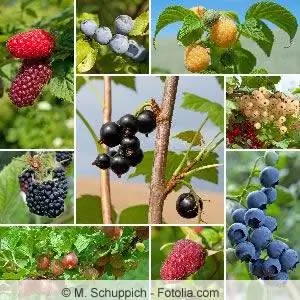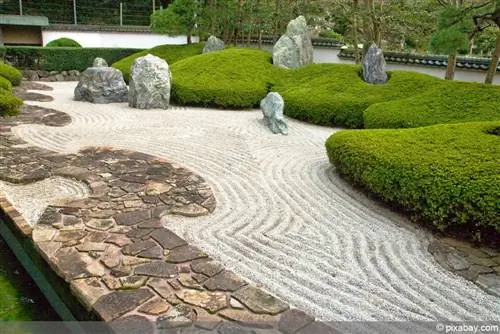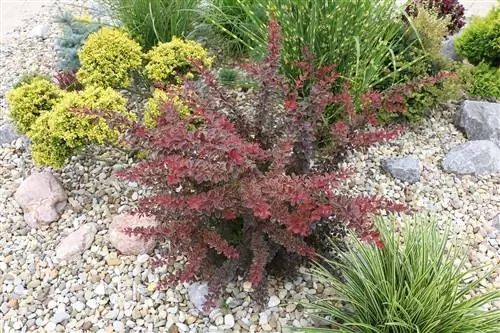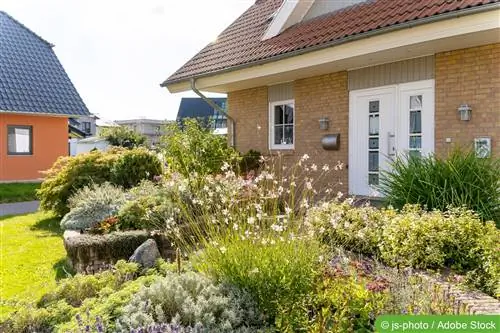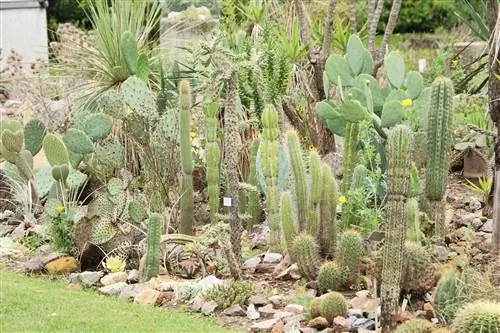- Author admin [email protected].
- Public 2023-12-17 03:39.
- Last modified 2025-01-24 12:45.
A north balcony is less suitable than a south balcony and a purely shaded bed in the garden is also rather unfavorable. Potted plants are suitable for the balcony, but are also a good alternative for the terrace and garden.
Suitable plants
Of course, the taste of each family member determines which plants are grown in the snack garden. On balconies the selection is usually very limited, but in the garden there are a wide variety of options, thanks to fruit espaliers, standard trees and columnar fruit. Of course, the site conditions must always be taken into account.
Berry fruit
The selection of berry bushes is large. From raspberries and blackberries, to gooseberries and jostaberries, to the various red, white and black currants, there is plenty of delicious berry fruit. Here, too, it depends on how much space you have. Columnar fruit needs the least of these. These special bushes grow steeply upwards in a small space, but don't have quite as many berries as normal bushes. Tall trunks require a little more space, but they have the advantage that you hardly have to bend down to pick them. Normal shrubs require the most space, but also bear the most fruit. When it comes to raspberries, you should use different varieties so that there is a long harvest period. We talk about summer and autumn raspberries. They are best grown on a special trellis. When choosing varieties, make sure that they do not become overgrown. The shoots must be cut regularly so that the plants are well under control. When it comes to blackberries, the thornless varieties are ideal for a snack garden. You pull them on the trellis so you can easily get to the fruit and the shoots can be easily cut. This prevents overgrowth and creates ideal conditions for lots of berries. Blueberries or bilberries require a special planting substrate so that these plants feel comfortable. They like acidic soil. The best thing to do with them is to use planters or create a special bed. The plants get quite large over the years, so you need to plan enough space. Although most varieties are self-fertile, there is a higher yield if several plants are planted together.
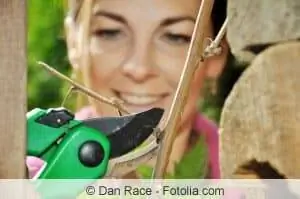
Wine and figs
Grapes require very little space. You can let them climb along any house wall or scaffolding. After just two to three years there are a lot of grapes to be harvested. On the balcony or terrace they can also be used as a privacy screen. They don't require much care. However, they should be cut regularly, otherwise meter-long shoots will form and the grapes will not have enough strength to ripen. Figs are usually only known from vacations in southern climes. There are now also fig varieties that ripen in our latitudes. The plants require some winter protection and are not suitable for areas with long, extremely frosty winters. Otherwise, they thrive well and there is more fruit here from year to year. If you have space, let a fig bush grow, otherwise the shoots can be pulled on the trellis or you can cut a trunk and let a tree grow. A place sheltered from the wind is recommended.
Mini vegetables
Not only fruit, but also vegetables belong in a snack garden. For reasons of space, mini varieties are ideal here. Of course, if you have enough space, you can use the normal size. Tomatoes are easy to grow, especially if you can place them under a sheltered roof. There are varieties for hanging containers and smaller containers, but also for beds and a really large container or box. The choice of variety is extremely important here. There are also cucumbers for both hanging baskets and containers. Of course, planting out is also possible. If you own a greenhouse, you're best off. Zucchini can also be cultivated in a container. Of course, smaller fruits are ideal, for example round ones. Alternatively, you can harvest early, then the zucchini will be particularly tender. You need some space for beans and peas. Alternatively, they can be attached to a trellis, where they also serve as a privacy screen. Various types of lettuce are very easy to care for and ripen quickly. Some are also suitable for balcony boxes and pots, even hanging baskets. Radishes also ripen quickly and require little space.
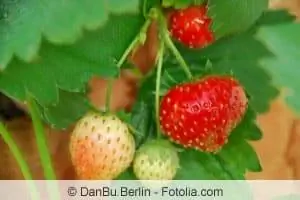
Strawberries
Strawberries belong in every snack garden. There are so many different types and varieties, you're sure to find a spot. Strawberries don't have to be grown in the traditional way, they also thrive in a hanging basket, a bucket, a raised bed and even a balcony box, you just have to make the right choice. If there isn't a lot of space, monthly strawberries are cheap because they produce fruit repeatedly over weeks and months. Strawberry towers are also a good alternative. If you want to plant different varieties, you should choose so that the harvest time is as long as possible.
Mini kiwis
If you have space, you can get kiwis in your garden; if you don't, you should choose the mini version, the dwarf fruits, also called mini kiwis. For the sake of simplicity, you should choose self-fertile varieties. This saves you the need for a fertilizer. The plants are usually sufficiently hardy, but are quite vulnerable to late frost. They are happy about some winter protection. Otherwise they are really easy to cultivate. Since they form shoots of enormous length, a framework for guiding them is recommended. This means that the plant (better two) can be used at the same time as a privacy screen for the summer. Regular cutting ensures that the plants do not become bare from below and that new, fruiting shoots continue to form.
Herbs
Herbs should not be missing from any snack garden. They are rarely eaten straight from the bush, but they still provide good service. Whether mint, parsley, chives, rosemary or sage, some herbs are essential. However, they should be cultivated together in one container according to their sun, water and plant substrate requirements, as this is when they thrive best.
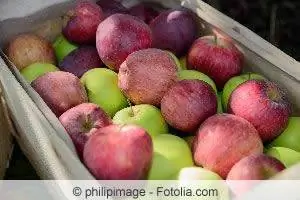
Apples and Pears
Even if you don't have much space, you can buy an apple or pear tree. Thanks to columnar fruit, a tree like this fits on every balcony. The yield is of course not as high as with a normal large apple tree. Espaliers also require little space. Both apples and pears are suitable for this. They can divide a snack garden into specific “departments” or be used as a planted fence. Different growth forms offer another possibility. Not all apple trees are the same. Whether bush, standard, half-stem, spindle or others, the selection is large and every size is available. If you have space for several trees, you should use varieties that ripen differently to extend the harvest.
Cherries
Similar to apples and pears, cherry trees can have different shapes. A distinction is made not only between sweet and sour churches and their many varieties, but also columnar trunks, cherry trees grown on espaliers and trees of different sizes. There is a corresponding copy for every place.
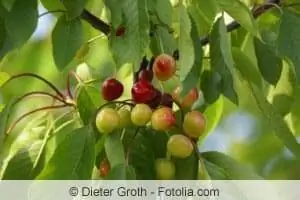
Create a snack garden
First you should measure the available space exactly. It is advisable not to just start planting, but to make a plan beforehand. Therefore the area is drawn to scale on paper. Then you should think about which plants you should definitely use. It is important to know how much space they require and how big they can get. The space must be planned. In addition, the site conditions and the requirements for the planting substrate should be known. Once you have everything together, you can create the garden on paper. It has proven useful to cut out small squares or circles and arrange them like the later plants, of course also to scale, according to their expected size. The entire snack garden can be planned on paper and you know exactly how many plants there are room for. Only when this draft is in place can it be implemented. The plants are placed in containers on the balcony. These are set up or hung. There must be enough space so that you can easily reach everywhere, even if the plants become significantly larger over time. It is important to use sufficiently large containers. You should also invest in good soil. Containers with an irrigation system that allow the plants to use water when needed are ideal. They also need to be sturdy so that they don't fall over in the wind. You should also pay attention to the appropriate substrate in the garden. You have to put the individual trees or plants together according to their substrates and watering or fertilizing requirements, so that they can all develop accordingly. Trellises or scaffolding should be provided right from the start. Appropriate planting distances must be ensured.
Conclusion
A snack garden is something great. Even if you only have minimal space available, you don't have to go without freshly harvested fruit or vegetables. It is important to find out beforehand about the species and varieties you want, because they all have certain wishes and grow better when these are fulfilled. There are countless types of fruits and vegetables that are suitable for growing. It is important to find out which ones are suitable for the existing location and the space available. The soil can be made to fit, but you usually have to take the location as it is. There will only be an appropriate harvest if the plants' wishes are fulfilled. You have to know them. So it's worth getting detailed information and planning your snack garden correctly. Have fun!

